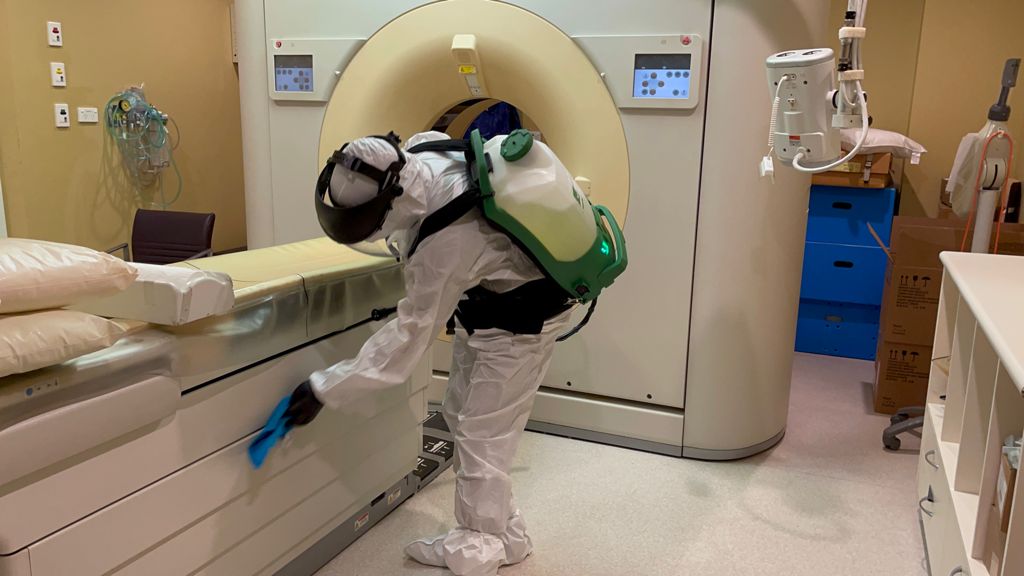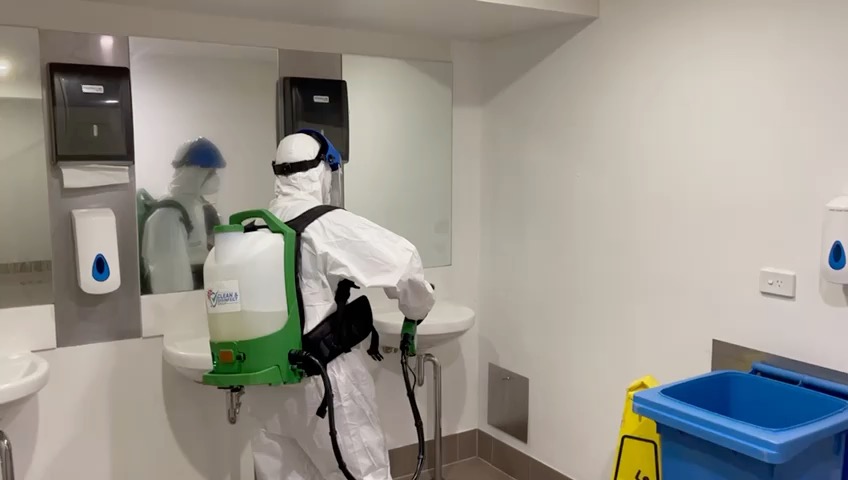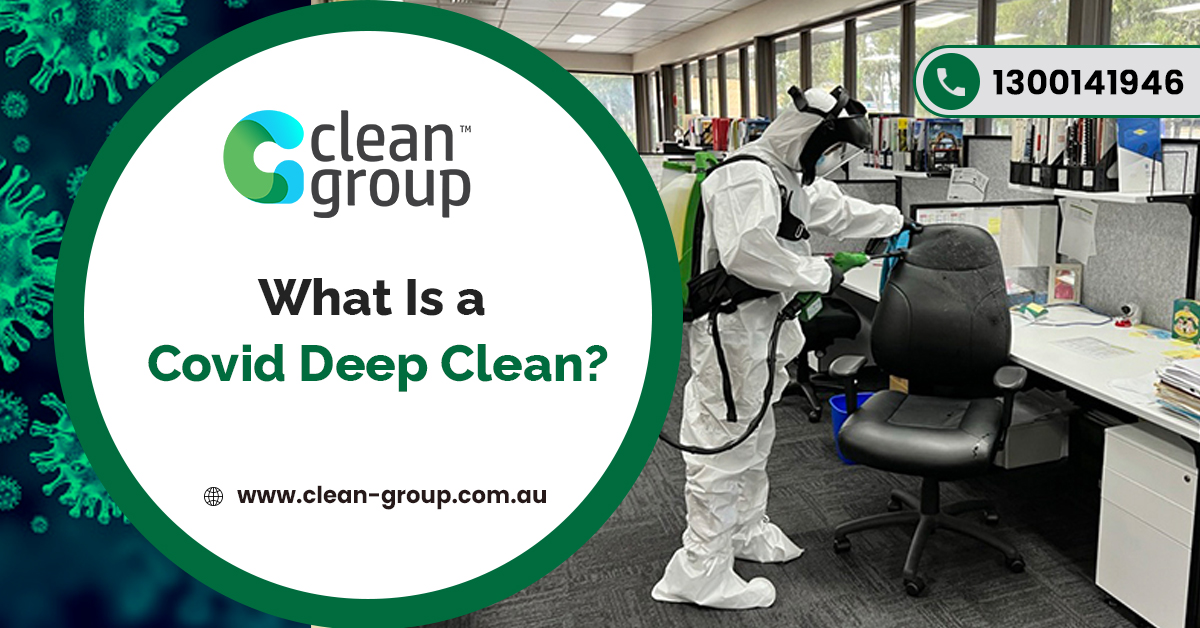Depending on the location, media outlets present, and infectious happenings responded to, the concept of a Covid deep clean is not unfamiliar. Of course, this is in name only, as the elements that constitute the process remain largely a mystery.
People are aware of what it means to clean a location. However, in the Covid era, things take a bit of a turn. Things are even more critical when cases are discovered within the confines of a building, the process is taken to a whole new level. Get to know more important information about Covid deep cleaning.
So, what can a reader hope to gain today? Beyond an acute understanding of what a deep clean looks like, there are other nuggets of information specifically compiled to tie the process together in such a way that carrying out the act becomes infinitely more possible.
Understanding the Term “Deep Clean”

Before explaining this concept in-depth, a few terms need to be addressed.With the advent of Covid-19, people have heard the words “disinfecting,” “sanitizing,” and “cleaning” being used seemingly interchangeably.
However, there are subtle nuances that make these terms different. First, there is the matter of disinfecting. Disinfectants are essential in carrying out this process effectively. Such compounds have an expert design allowing them to kill both organic and inorganic matter in the form of bacteria and viruses.
It’s best to use an EPA-approved disinfectant for the best results, as these can tackle viruses on hard services which is essential to fighting against the novel coronavirus.
Sanitizing is much like disinfecting, except the chemicals used are only meant to tackle bacteria and not viruses. Again, there is an EPA list of approved sanitizers, but they are not necessarily recommended for Covid-19 mitigation activities since the core of the illness happens to be a virus.
Finally, there is cleaning, which by definition, does not natively include any of these special-purpose substances. Instead, cleaning is about getting rid of visible contaminants and imperfections. So, people tend to aim for the removal of debris, dust, and dirt. In most cases, nothing more than soap and water is used.
With all these terms out of the way, one can return to the question of, “what is deep cleaning?” Well, it takes the typical cleaning process, adds more fine-grain components, and incorporates disinfecting as well.
Taking cleaning or disinfecting independently, there would be some surfaces and items that may either not get much focus or not be cleaned at all. During a deep cleaning procedure, this would change entirely.
So, in a coffee shop, for example, a cash register would probably be cleaned before the introduction of Covid-19. However, during the deep cleaning procedure, the screen and buttons may be individually disinfected, which would not be the case before.
When to Clean
Currently, there isn’t an established baseline for when deep cleaning should take place. This is mostly left to the persons who have responsibility for the areas being cleaned.
Risk and feasibility are two of the largest factors that go into making such a decision, especially since a full deep clean is not practical if the intervals are too regular.
Take a business, for example. Whenever a deep clean is being performed, it means that workers cannot be present. If this were to occur daily, there would naturally be some productivity concerns introduced.
Therefore, such a business may benefit more from having deep cleaning activities done at times when employees would not be present in the office.
Additionally, deep cleaning can technically be segmented. So, some surfaces or items may be easier to reach and clean, and they may also benefit more from a regular cleaning schedule.
For example, high traffic areas that encounter bodily fluids should probably be cleaned quite often. Bathrooms in public places fit this bill out well.
There is also the unscheduled variation of deep cleaning. Most often, when cases of Covid-19 are discovered in a business context, the building is shut down and a deep clean is performed before employees return on another day.
It’s not hard to see that there’s a lot of flexibility offered in setting up a deep cleaning schedule. Nevertheless, it’s important to not get misguided by the said flexibility and to establish a plan.
Fleshing out how both scheduled and emergency cleaning procedures are handled is a great idea and can make for a more efficient workflow.
What Should You Be Cleaning?
One of the main points that have been covered is the extent to which deep cleaning goes beyond what its traditional counterpart would look like. Therefore, the scope of what should be cleaned is drastically expanded.
When the discussion is about COVID-19 deep cleaning, it would probably be harder to find something that shouldn’t be cleaned. Realistically, everything should be on the radar, unless it is highly impractical.
The research is already out there indicating different lengths of time that the virus can remain active on different surfaces. While it goes away in mere hours on some, days may pass before other surfaces are safe to touch.
Stainless steel is a great example. Many high-traffic business places have some kind of stainless-steel structure or trinket present. Not only does the virus remain present on such surfaces for upwards of three days at times, but it does so in its infectious state. Plastic, which is arguably even more popular, is just as habitable to the virus.
The point being made here is that no matter how clean it may look and no matter if it were not clean before, once cleaning it is possible, it should not be ignored during a deep cleaning process.
Only one misstep is required for someone to contract the virus, and who’s to tell if the one surface ignored is going to be the one that causes one or more infections?
Your PPE

Anyone carrying out a deep clean is directly exposed to COVID-19. Therefore, it’s critical to ensure that these people are adequately protected from contracting the virus while doing so. To this end, personal protective equipment (PPE) becomes necessary to take on the task.
The items needed are very simple and include disinfectant (or a suitable substitute that can be reliably used to clean the hands), an apron or gown, a mask, eyewear, and gloves.
First, the hands must be disinfected. Following this, the apron or gown is then put on. This is followed by the mask, then the eyewear, then the gloves.
Note that it’s important to pay attention to the disinfectant being used. Some of these require protection of the eyes or even of the entire face. The last thing someone would want is temporary or permanent scarring or damage to the face from attempting to keep a place clean.
Following the deep clean, removing the PPE properly is just as important. the best way to have the right mindset is to assume that everything that has been touched or that is being worn is infectious. Therefore, a hand cleaning routine is going to be performed once after every step.
Start by removing the gloves after which the hand cleaning routine is performed for the first time. The gown is then removed, and hand cleaning is repeated. The eyewear and mask are also then moved, and hand cleaning is done between each of these two steps.
Cleaning Order
Though the aim is to clean everything with this process, it’s not meant to be done in random order. Instead, cleaning should be done from top to bottom. So, anything that’s higher up is cleaned first, and the items that are the closest to the floor are cleaned last. This applies whether the subject of cleaning happens to be a surface or a movable item.
The logic behind the approach is very simple. If you are cleaning a higher area, it’s expected that both visible and invisible impurities are going to make their way down due to gravity. You would not want to clean a service only to have it re-contaminated while cleaning another one.
Additionally, things on the same level also have a specific order. The surfaces and items that appear the cleanest are to be tackled first, after which those that appear the dirtiest are taken on.
Being wary of cross-contamination is another important requirement. If present in an area that is yet to be cleaned, at no point should cleaners be venturing into one that has already been cleaned. Doing so all but negates the previous efforts since the only sure countermeasure is to clean the newly contaminated area again.
Another good tip is to do the disinfecting last. During a deep clean, there are numerous steps to be taken including sweeping, dusting, and even emptying the trash. In other words, this would be your typical cleaning phase that’s responsible for getting rid of visible concerns.
Only after this is complete would you start the disinfecting process. If not, you run the risk of the recontamination of previously disinfected areas.
Cleaning Different Places
Though there are general deep cleaning guidelines, there is value in approaching things slightly differently based on this specific place being cleaned.
Hotel Room
The important thing to bear in mind here is that the potential for contamination is as high as it gets. Hotels encourage people to be at home, meaning many of the activities associated with home life are carried out here.
All linen must be removed and placed in a contained carrying medium. The items are to be washed in conjunction with the contaminated laundering process that either the hotel or whatever partner company that does laundry has in place.
Any cutlery, crockery, or appliances are also to be removed using a confined medium and washed. Kitchen appliances are cleaned inside out, and any surfaces that could even potentially be touched are to be cleaned.
All bathroom elements are also cleaned with disposable equipment. the toilet is meant to be cleaned last.
The process should be carried out with disinfectant before the room can be deemed clean again. Note that this whole workflow should be completed every time a guest checks out of a room.
Supermarket
In a supermarket, the intention is to capture any surface that people come into contact with. This may be by touching, stepping, leaning, etc. Therefore, walls, cabinets, light switches, doorknobs, and shelves are all fair game.
While the staff could potentially undertake the process, based on the facilities that a supermarket has available, it is probably best to have professionals come in and tackle the deep cleaning. As was the case with that hotel, a disinfectant must be used for this process to be considered complete.
Office
The process for office cleaning is not too far move from that of the supermarket. Again, the general idea is to capture any surface that people could potentially encounter.
Additionally, the deep cleaning procedure must include all the office equipment. Depending on the nature of the business, this could include computer monitors, system units, peripherals, paper shredders, printers, guillotines, staplers, kitchen implements, etc.
Shortened Tips
At this point, quite a bit of information has been covered to make the deep cleaning process that much more understandable. However, for readability and reinforcement, here is a shortened version of some essential tips to effectively carry out a COVID deep clean:
- Do not use any disinfectant that is not EPA-approved. On that note, do not use a sanitizer in place of a disinfectant since sanitizers target bacteria and not viruses.
- Ensure that the people carrying out the deep clean are trained to do so, whether they are internal or hired professionals.
- Do not start the disinfecting process until visible soiling is completely removed.
- Never complete a COVID deep clean without the required personal protective equipment (PPE).
- Remember that the idea of a deep clean is to tackle every touchpoint that people could ever have. If this presents an insurmountable task, foggers, misters, and electrostatic sprayers are adept at reaching more difficult surfaces.
- Start with higher areas then proceed to lower ones when disinfecting to prevent the recontamination of cleaned areas.
- Do not return to an already cleaned area from one that is yet to be cleaned, as cross-contamination may occur.
- Every time tasks are switched, hand cleaning is to be observed
- Do not mix various disinfectants or other chemicals unless manufacturers have indicated that doing so presents no risk.
- Ensure that the gloves being used are appropriate based on the chemicals that are going to be used during the process.
- There is no recommended schedule for deep cleaning. Instead, create your own and ensure it details how scheduled and unscheduled cleaning processes are taken care of.
Final Remarks
With all the information presented here, just about anyone should be prepared to execute a proper deep cleaning routine. Nevertheless, there is no substitute for appropriate documentation of policies and procedures. So, do not rely on this guide as the only point of reference
When the said documentation is done correctly, whether it’s a scheduled weekly operation or a worker has tested positive for COVID-19, it becomes that much easier to execute the deep cleaning methodology effectively.
The responsibility of eliminating the virus lies with everyone, and this is just one way to demonstrate an unwavering commitment to the safety and health of the population.

